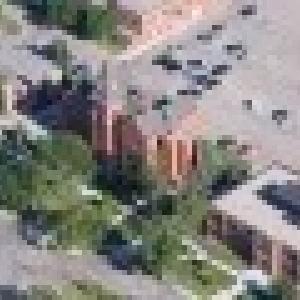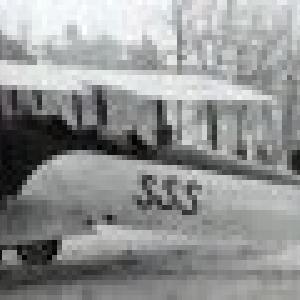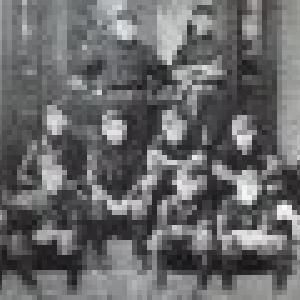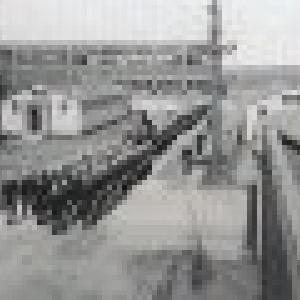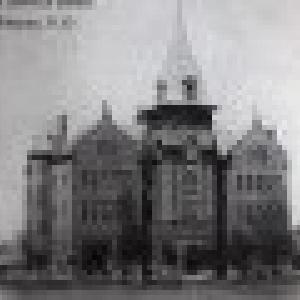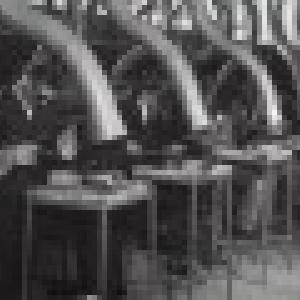For over 120 years, NDSCS has provided responsive educational programs and experiences for thousands of students who, upon graduation, fulfill workforce demands. Today, we continue our mission as a comprehensive college encompassing liberal arts transfer programs, career and technical education, and workforce training.
1903 - NDSCS is provided for in the Constitution of the State of North Dakota and begins actual operation under the name State Scientific School, making it one of the oldest public two-year colleges in the United States.
1905 - The Arts and Science Division is the first division to be organized, and the Business Division begins operation shortly after.
1922 - The first trade and technical programs are offered, and since that time, NDSCS has become widely accepted as a hub for recruiting employees. NDSCS follows the basic principles of the Babcock Plan and the North Dakota Plan. The original plan of four interacting curriculum divisions was the result of a survey conducted in 1921 by Dean Earl J. Babcock of the School of Mines of the University of North Dakota. NDSCS is named the central trade and technical institution for the state of North Dakota. Under the North Dakota Plan, all trade-technical training in the state for many years was centralized in this institution - a method which proved very satisfactory in a state with sparse population and where agriculture continues to be the primary industry. NDSCS provides practical, hands-on education for thousands of students who, upon graduation, become available to meet business, professional and industrial needs.
1987 - North Dakota State School of Science changes its name to North Dakota State College of Science and converts from the quarter system to the semester system in 1992 as part of a North Dakota University System initiative.
1997 - NDSCS establishes the Skills and Technology Training Center as a regional workforce training center located in Fargo.
2002 - The North Dakota State Board of Higher Education officially recognizes NDSCS as a Centennial College.
2005 - NDSCS expands its welding technology program to the Fargo location.
2007 - A $1.5 million renovation begins on the Earl "Skip" Bute Alumni Stadium and the Frank Vertin Field.
2008 - NDSCS and West Fargo Public Schools join together to offer the Early College Program - allowing 11th and 12th grade students to take college classes and earn credit toward an associate's degree while in high school.
2009 - Wilbur A. Lunday, an NDSCS alumnus, and his wife Betty, both deceased, donate more than $1 million to the College. NDSCS launches the first Give Kids a Smile day and along with several area dentists, provide $11,000 in free dental services to 50 qualifying area children. In January, NDSCS announces the journey worker track program that offers college credit for completed federally-approved apprenticeship training. NDSCS also launches social media initiatives including Facebook and Twitter.
2010 - In July, a $5.7 million renovation of Horton Hall is completed. The building, originally constructed in 1927 for $65,000, is LEED certified.
2012 - In April, a $10.5 million Bisek Hall diesel building expansion project breaks ground, and in May, a $9 million renovation begins on Forkner and Riley halls.
2013 - In July, the $9 million renovation of both Forkner and Riley halls is completed, and in September, the $10.5 million Bisek Hall diesel expansion project is finalized. We also say goodbye to two historical buildings on campus - Hektner and Burch Halls. In November, the $6.7 million renovation of Old Main begins. The NDSCS Ambassadors is also developed, a new student group that serves as a resource for NDSCS and the Wahpeton community.
2015 - In August, the extensive $6.7 million renovation of Old Main is completed and old architectural elements are combined with new technology. "This is a milestone celebration at NDSCS," says Dr. Richman. "Old Main was the original building on the NDSCS campus in Wahpeton and today we celebrate its history along with its future."
2017 - In May, NDSCS acquired nearly 95 acres of farmland north of Wahpeton from the Kosel and Patterson families. Owners Linda Patterson and her mother, Mary Kosel, worked with the NDSCS Alumni/Foundation to arrange the land usage which will be used for a land lab. In October, the College completed a $13 million water, sewer infrastructure project. As part of the project, a new arch erected at the south entrance of campus will be an icon for NDSCS for years to come.
2018 – The William F. Rothwell Center for Science was dedicated and a $250,000 endowment was established to support NDSCS Science Curriculum.
2019 – NDSCS added Clay Target and Esports as club competition team options for students.
2020 – NDSCS successfully navigated the challenges presented by the COVID-19 pandemic. To minimize the risk and spread of COVID-19, NDSCS shifted all courses to remote delivery following Spring Break through the end of the Spring 2020 semester. The 2020 Commencement Ceremony was postponed to August and shifted outdoors. NDSCS resumed modified in-person courses June 2020 through Spring 2021. Physical modifications were made to 95 classrooms to allow for effective hybrid instruction; procedural modifications, including pass/fail grading and remote work, were implemented to foster students’ success and employee flexibility. Men’s baseball returned to Athletics for the first time since 1963.
2021 – NDSCS Alumni Foundation, along with numerous partners and donors, broke ground for the Career Innovation Center (CIC) in South Fargo. This facility will provide Career and Technical Education and Exposure to Cass County K-12 students and encompass NDSCS-Fargo operations. The CIC will help meet workforce demands for the state and provide robust educational opportunities and pathways for students. NDSCS President Dr. John Richman also retired after nearly 50 years associated with the College.
2022 – The North Dakota State Board of Higher Education hires the 10th President, Rod Flanigan, Ph.D.
